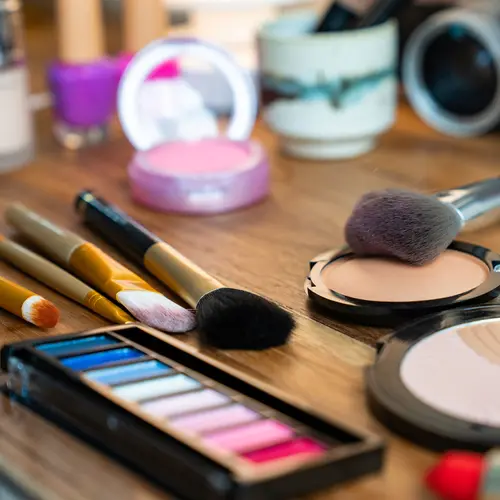Just like carpenters and mechanics, you need the right tools for the job at hand, and applying makeup is no exception.
For starters, great brushes are a must, says Sonia Kashuk, a celebrity makeup artist in New York City. But when you're faced with a wall of brushes at the drugstore, figuring out which shapes and sizes you really need can be tough.
We asked the pros to help narrow down the options to five key makeup tools.
Some tips first: Before you pick up a brush, make sure it's clean. "I cannot put makeup on my face if a brush is dirty," Kashuk says. "It's like putting on dirty clothes. The brushes pick up dead skin and oils and can harbor bacteria that cause breakouts and irritation. Plus, if your brushes are caked with makeup, they won't work as well as they do when they are fresh."
Though makeup pros differ on how they care for their tools, they agree that clean brushes work better and last longer. Kashuk washes her brushes every morning with a gentle cleanser and lays them flat on a towel to dry. Bruce Grayson, a Hollywood makeup artist who has worked on the Oscar and Emmy shows, says
cleansing at least every other week should suffice. "I use a natural soap, but any liquid soap will work," he says.
Here are Kashuk's and Grayson's picks for the five most useful makeup brushes.
Foundation Brush
You should always have one of these, Grayson says. Look for one that has tapered ends and that's flatter than it is fluffy.
"When applying liquid foundation, these brushes allow you to reach the contours of the face around the eyes, mouth, and nose," he says. "You can control the application and the amount that goes on to your skin better than with your fingers."
Look for stiff synthetic bristles, Kashuk says. These fibers can hold heavier products like liquid and cream foundation without absorbing the makeup.
Large Powder Brush
A big fluffy brush with a rounded shape is useful for dusting on loose powder, whether it's setting powder or blush.
"The fibers aren't packed too tightly, so they can hold the powder and easily release it when you swirl it on your skin," Grayson says.
"A powder brush blends very well, so it's great for blush," he says. "The large brush head doesn't leave lines of demarcation, so you won't end up with obvious stripes of blush."
Shadow Blending Brush
A large, dome-shaped eye-shadow brush buffs makeup for a seamless application, Kashuk says. No matter how you apply shadow, the blending step is crucial to smooth harsh edges and create a soft, seamless effect for a smoky eye or a daytime look.
"You can use this for all-over shadow application, but I like to use this to blend," she says.
Angled Shadow Brush
"The majority of women emphasize their eyes for drama," and this type of brush helps with that, Kashuk says.
The short, angled bristles can deposit pigment in the crease of the eyelid to add depth. "The angled shape fits into the outer corner, making it ideal for contouring," she says.
And you can use the brush to deposit highlighting powder at the brow bone for added dimension.
Pencil Brush
For the detail work, you need a small brush with a pointed end. Also called a concealer brush, a pencil brush deposits color exactly where you want it.
"The pointed end is great for covering blemishes because it holds on to concealer until you deposit it," Grayson says.
The tiny size also makes this makeup brush a handy multi-tasker. "The short, stiff bristles are great for applying gel, cake, or pencil eyeliner exactly where you want it on the lash line," he says.
The round shape makes a pencil brush easier to manipulate than a flat brush and won't leave harsh lines, he says.
Find more articles, browse back issues, and read the current issue of "WebMD Magazine."

